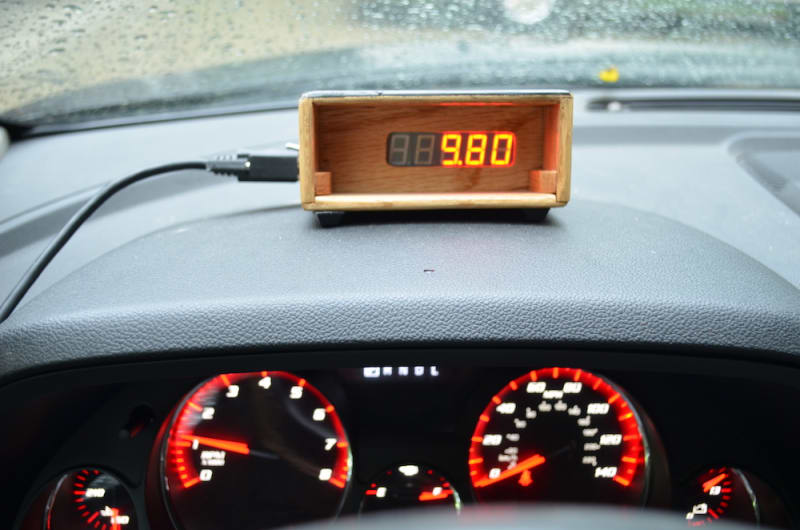Introducing ValueGauge, the first information display to enable motor vehicle drivers to operate in ways that yield the most VALUE for their TIME and fuel dollar. ValueGauge consists of a microcomputer and electronic display in view of the vehicle operator, and connects to the vehicle Engine Control Module (ECM) to collect vehicle speed and fuel use data. Using the information provided by ValueGauge, we estimate that many drivers may achieve a 10% fuel savings, obtain maximum Value for their Time and fuel dollar, and avoid the true waste of fuel , time, and emissions. ValueGauge has revealed that the traditional advice for saving fuel is only partially correct, sometimes just plain wrong, or fails to address the true ways of saving fuel and avoiding waste. Illustration 1 reveals a prototype Valuegauge installed on the author's GMC Acadia, indicating fuel cost in $/hour near 80 mph.
We suggest that although the engineering measure of fuel efficiency in miles per gallon is important and useful, economic or financial measures are more relevant to most individuals. The market price of fuel is just as important; the product determines cost of transportation. Another measure that is also significant to drivers is time of travel, the fundamental reason for enduring motor vehicles in the first place. We suggest that drivers have a sense that their time is of value to them, their only non-renewable resource, and drive accordingly. Thus, we suggest that for consumers, a better measure of vehicle fuel efficiency would be in units of $/hour.
An interesting question is “What is the change in cost relative to the change in travel time to drive a little faster or slower”. We call this measure Dynamic Fuel Cost, or DFC, in units of $/hour. ValueGauge provides a constant display of DFC to the driver, whether the vehicle is accelerating, operating at steady speed, or decelerating. The microcomputer in ValueGauge obtains speed and fuel flow information from the vehicle engine and drivetrain control modules, senses acceleration, steady speed, and deceleration, and computes and displays DFC using proprietary patented algorithms. Current Fuel Price in $/gallon, a Value of Time in $/hour, and speed limits are readily input to ValueGauge by the operator.
Driving with ValueGauge yields some interesting and unexpected results. For example, DFC is nearly $10/hour at 80 mph, clearly affordable for most working folk. A graph of DFC versus steady speed for the author’s GMC Acadia is enclosed as Illustration 2. During acceleration, ValueGauge reveals that the fuel consumed is independent of rate of acceleration, contrary to popular belief, so fast acceleration is not wasteful. Finally, ValueGauge indicates that the most cost- and time- effective way to save fuel is to coast more rather than brake. Maintenance costs are also reduced by longer brake life.
In conclusion, with the information and techniques suggested by ValueGauge, vehicle operators may learn new driving behaviors that save fuel and reduce emissions, as well as their time. Concurrently, waste of both fuel and time is readily avoided.
Like this entry?
-
About the Entrant
- Name:David B Smith
- Type of entry:individual
- Patent status:patented





